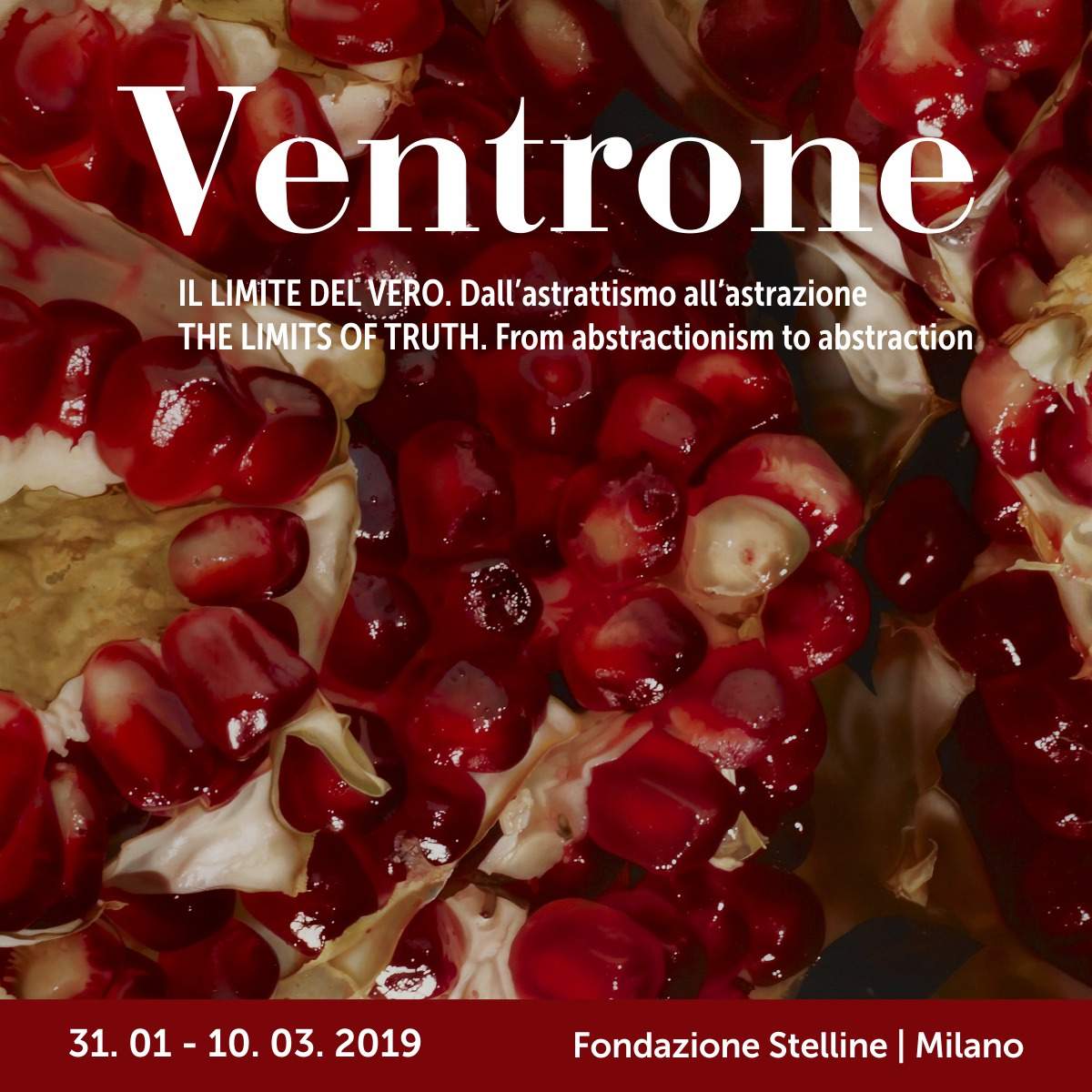From January 31 to March 10, 2019, the Fondazione Stelline is hosting the exhibition Il limite del vero. From Abstraction to Abstraction, a retrospective curated by Angelo Crespi dedicated to Luciano Ventrone, defined by Federico Zeri, who discovered him, as “the Caravaggio of the twentieth century.”
From his beginnings as a classical figurative painter to his geometric experiments, passing through informal and programmed art, this exhibition of 30 works, many of which are being shown to the public for the first time, investigates the long career of Luciano Ventrone, who began painting at a very young age, in the early 1960s, fulfilling a kind of precocious vocation. His is a long apprenticeship full of digressions, on the wave of the various currents of Italian painting and in the temperaments of the Second World War, which finally allows him to land with increasing strength in a very personal style, the “Ventroneian abstract realism” in which the foundations of painting (form, light, color) are put at the service of a Platonic philosophical conception aimed at revealing the world of prime ideas.
Since the 1990s, especially the still lifes are no longer, and only, the representation of reality, a mimetic effort albeit worthy of praise, but if anything, the successful attempt, thanks to a talent cultivated daily with hard work, to go beyond reality, as Angelo Crespi explains, and experience “the limit of truth,” that is, that thin line that distances us from actual knowledge, moving away from real objects and approaching as far as possible the abstraction of “things.”
Ventrone, who calls himself "an abstractionist grappling with reality, " a metaphysician forced to measure himself against the transience of nature, is not only one of the greatest and best-known figure painters internationally, but first and foremost he is a painting scientist and, ever since the representations in the 1960s of cells magnified under a microscope, works later made available in neurology texts, he has been refining his own ancient painting technique made of patient oil glazes, comparing it with the most advanced technologies that today allow us to look and see “more” beyond the real.
Hence the amazement, of a painting that does not deceive the eye, but rather the mind, and forces us to short-circuit to make sense again of what does not exist in reality, fruits, vegetables, flowers that are never so perfect, never so enlightened, never so on the verge of being real.
Luciano Ventrone was born in Rome in 1942. In 1983 an article written by Antonello Trombadori in L’Europeo induced art historian Federico Zeri to take an interest in the artist, suggesting that he tackle the subject of still lifes. It was here that he began his long, and as yet unfinished, research into the various aspects of nature, capturing details that were increasingly detailed and almost invisible to “eyes bombarded by millions of images,” such as those of the people of our time. It is this research by Ventrone that has, over the decades, attracted the attention of, in addition to Federico Zeri, Sergio Zavoli, Duccio Trombadori, Marco Di Capua, Vittorio Sgarbi, Achille Bonito Oliva, Roberto Tassi, Giorgio Soavi, Edward Lucie-Smith, Beatrice Buscaroli and Eugenia Petrova, to name a few.
For all information you can call +39.02.45462.411, send an email to fondazione@stelline.it or visit www.stelline.it.
 |
| Luciano Ventrone, the Caravaggio of the 20th century, on display at Palazzo delle Stelline, Milan |
Warning: the translation into English of the original Italian article was created using automatic tools. We undertake to review all articles, but we do not guarantee the total absence of inaccuracies in the translation due to the program. You can find the original by clicking on the ITA button. If you find any mistake,please contact us.